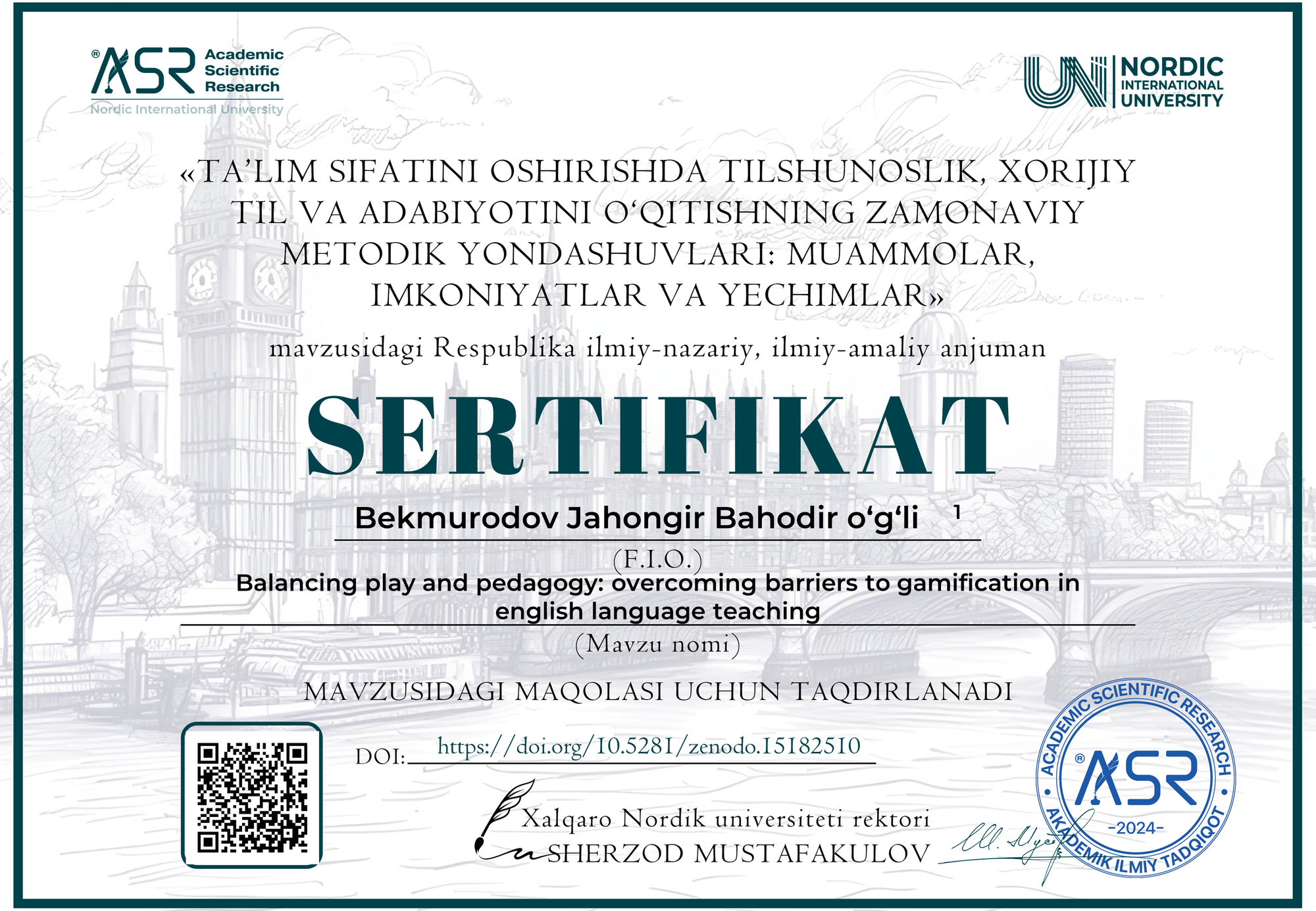Bekmurodov Jahongir Bahodir o‘g‘li 1

DOI: https://doi.org/10.5281/zenodo.15182510
Zenodo community: https://zenodo.org/records/15182510
Nordic_press journal: https://research.nordicuniversity.org/index.php/nordic/article/view/2284
MAQOLANI YUKLAB OLISH
SERTIFIKATNI YUKLAB OLISH
REVIEW:
The paper authored by Bekmurodov Jahongir Bahodir o‘g‘li, assistant lecturer at Shahrisabz State Pedagogical Institute, provides a thorough and timely examination of gamification in the context of English Language Teaching (ELT). This research contributes valuable insights into how carefully designed gamified instruction can enhance student engagement, linguistic competence, and inclusivity in diverse classrooms.
The study is distinguished by its multidimensional approach, categorizing challenges into four clear domains—pedagogical, classroom management, technological, and psychosocial. This framework not only deepens our understanding of gamification's complexities but also strengthens the paper’s practical relevance. The proposed strategies—such as stealth assessment, culturally localized narratives, and differentiated role-based participation—are grounded in both theory and classroom applicability.
Notably, the research emphasizes balancing entertainment with academic rigor, which is often a delicate task in gamified environments. By showcasing examples like vocabulary quests, syntax sprints, and cooperative storytelling tasks, the author effectively bridges theoretical knowledge with classroom execution. The incorporation of both high-tech and low-tech solutions also makes the work adaptable across various educational contexts, especially in resource-constrained settings.
The structure of the paper is clear, the language is academically appropriate, and references are well-integrated. A wide range of contemporary sources adds credibility to the analysis, and the conclusion aptly synthesizes the findings into a practical vision for implementing gamification in ELT without compromising learning objectives.
Conclusion:
This is a well-written, well-researched, and pedagogically sound paper that provides actionable recommendations for overcoming the barriers to gamification in language instruction. It can be confidently recommended for academic publication and will be of great interest to educators, curriculum developers, and researchers in the field of language education and educational technology.



